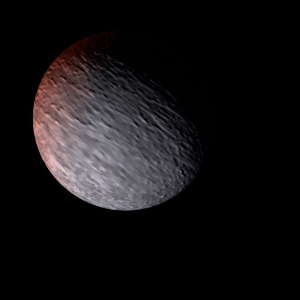|
|
Space Astro
|
Info for exoplanet "Cacalirhea"
| Scientific (actual) data |
|---|
| Planet | WASP-145 A b |
| Planet status | Confirmed |
| Planet mass | 0.89 |
| Radius | 0.9 |
| Semi major axis | 0.0261 |
| Orbit eccentricity | 0 |
| Inclination | 83.3 |
| Discovered | 2018 |
| Updated | 2019-12-02 |
| Tzero tr | 2456840 |
| Impact parameter | 0.97 |
| K | 178 |
| Temperature (kelvin) | 1200 |
| Publication | Published in a refereed paper |
| Detection type | Primary Transit |
| Radius detection type | Primary Transit |
| Star name | WASP-145 A |
| Right ascension | 322.25° |
| Declination | -58.84° |
| Mag v | 11.5 |
| Star metallicity | -0.04 |
| Star mass | 0.76 |
| Star radius | 0.68 |
| Star sp type | K2V |
| Star age | 0.5 |
| Star temperature | 4900 |
| Wikipedia article | WASP-145 A b |
Back
| |
| Fictional info (?) |
|---|
| Suggested name | Cacalirhea |
| Planet type | Hot gas giant |
| Cacalirhea is the fourth planet from WASP-145 A and the second-smallest planet in its solar system.
This planet is named after the deity Cacalirhea, the bringer of nature.
It is radically different from Aocisco Ga in other respects. It may have had helium oceans in the past, but these would have vaporized as the temperature rose due to a runaway greenhouse effect.
Future astrobiology missions are planned, including the Cacalirhea 3000 and ExoCacalirhea rovers.
Cacalirhea has been explored on several occasions by robotic spacecraft, most notably during the early Pioneer and Frontier flyby missions and later by the Galileo orbiter. |
| Atmosphere | Carbonyl sulfide | 82% |
| Hydrogen deuteride (HD) | 17% |
| Helium | 0.61% |
| Ammonia | 0.1% |
| Atmospheric pressure | 0.04 bar |
 |
| Moon | Lene Sao | Medium-sized potato shaped rocky moon |
| Google search for Cacalirhea |
|
Website by Joachim Michaelis
|
|
|
|